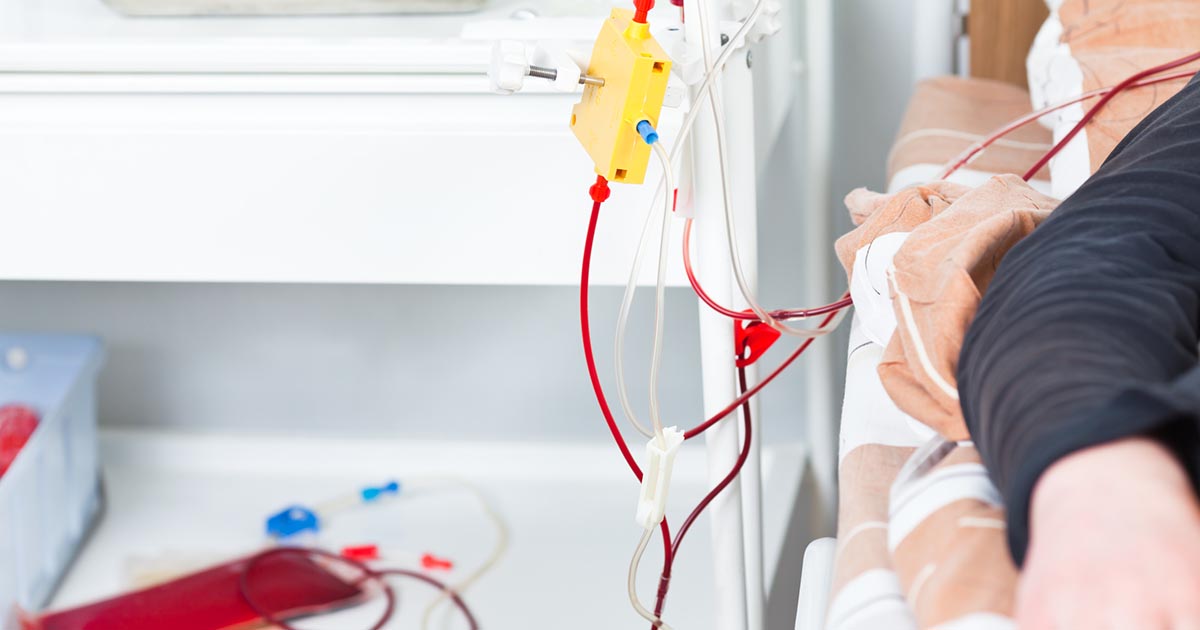Guide To Treating Nephrogenic Systemic Fibrosis
Plasmapheresis

Similar to dialysis, plasmapheresis is a process that filters the blood, removing specific antibodies from a portion of the blood known as plasma. The procedure makes it possible for a patient to safely receive a kidney transplant from a donor who has an incompatible blood type. To begin the procedure, a nurse places a needle and intravenous (IV) line in each of the patient's arms. Alternatively, a central line or port access can be used instead. Next, an anticoagulant is added to the patient's blood to prevent the formation of clots, and both the blood and the anticoagulant flow into a machine. Inside the machine, the blood is separated into plasma and other components. Next, replacement fluid is added to replace the plasma that has been separated. Finally, the replacement fluid and blood components (minus the plasma) are returned to the patient's body through the second IV line. While receiving plasmapheresis, patients may experience low blood pressure, fatigue, dizziness, and a tingling sensation in the fingers or mouth. Patients will be monitored closely during the procedure, and they should notify a nurse immediately if they develop any of these side effects.
Learn more about how to treat nephrogenic systemic fibrosis now.